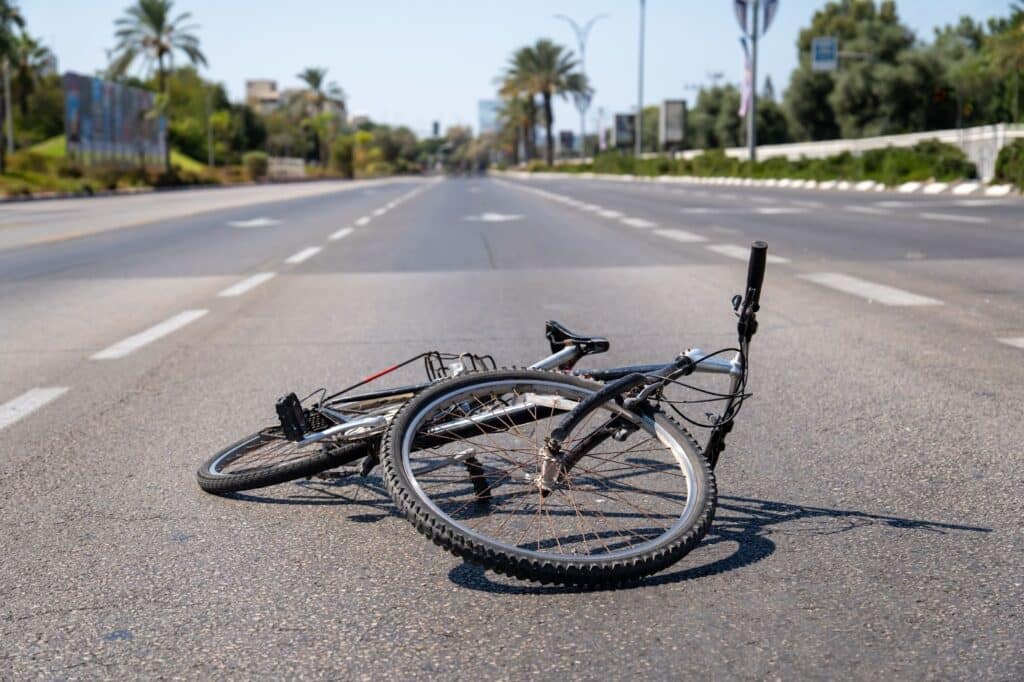When Justice Fails Cyclists: Lessons from Waring v. Womack
Cyclists in Texas already know the roads can be dangerous—but what many don’t realize is just how little sympathy they’ll get in a courtroom. The case of Waring v. Womack is a prime example of how challenging it is to obtain justice, even in situations where driver negligence seems clear.
Let’s break down what happened, why the jury ruled the way it did, and what this means for cyclists pursuing personal injury claims after a bike accident in Texas.

Case Overview: Waring v. Womack
In this case, the cyclist was seriously injured when a driver turned left directly in front of him. The driver admitted the sun wasn’t in his eyes and there were no obstructions to his view—yet he claimed he simply “didn’t see” the cyclist.
Despite these admissions, the jury found no negligence on the part of the driver. Why?
An “expert” hired by the driver’s insurance company testified that the cyclist was roughly six seconds away from the intersection when the driver began his turn—suggesting that both parties could have avoided the crash. The court accepted this reasoning, even though six seconds is more than enough time to see and react to an oncoming cyclist.
What This Means for Injured Cyclists in Texas
If you’re a cyclist hit by a car in Texas, don’t expect a jury—or even a judge—to be on your side. Here’s why:
1. Cyclists Start at a Disadvantage in Jury Trials
You’re unlikely to have any cyclists on your jury. During voir dire (jury selection), defense attorneys routinely strike jurors who ride bikes or express sympathy for cyclists. What’s left is often a jury made up of individuals who think cyclists belong on sidewalks—or worse, that we’re reckless for riding on the road at all.
Even in situations where liability seems obvious, like in Waring v. Womack, a jury might side with the driver simply because of an anti-cyclist bias.
2. Insurance Companies Use Biased “Experts”
Many insurance companies have a roster of go-to experts who routinely testify on their behalf. These “experts” often make a living testifying in favor of insurance companies, minimizing liability and discrediting injuries.
In the Waring case, the defense used William Nalle, a known figure in Texas legal circles, who has testified almost exclusively for insurance companies for decades. These testimonies give juries a reason to doubt the cyclist’s case, even when the facts clearly point to driver negligence.
3. Judges Are Often Not Cyclists, Either
While many attorneys ride, it’s rare to find a Texas judge who is also a cyclist. Judges often share the same misconceptions about cyclists as the general public—thinking we’re “asking for trouble” just by riding on the road. These unconscious biases can affect rulings, especially in close-call motions or bench trials.
The Harsh Reality: Cyclists Are “Invisible” to Many Drivers
One of the most common defenses drivers give after hitting a cyclist is, “I didn’t see them.” It’s almost a reflex—and courts often accept it. In Waring v. Womack, the cyclist was wearing dark clothing, and the driver claimed he didn’t see him until it was too late.
But the truth is, drivers often don’t expect to see cyclists. They aren’t looking for us. And because we’re smaller than cars and positioned differently on the road, drivers frequently overlook or misjudge our speed and distance.
What You Can Do:
- Wear bright or fluorescent clothing—even during the day.
- Use front and rear lights at all times.
- Ride in groups when possible.
- Stay especially alert at intersections and driveways.
Why Intersections Are Especially Dangerous
According to the Texas Driver’s Handbook:
“The most common motorist-caused car-bicycle collision is a motorist turning left in the face of oncoming bicycle traffic.”
Cyclists are often hidden from drivers turning left due to their position in the road or being partially blocked by other vehicles. Unless you’re first in line at the light, drivers may not even know you’re there.
My personal experience? While left-turn accidents are frequent, I’ve handled more cases involving cyclists being hit from behind or clipped by side mirrors—especially on narrow or shoulderless roads.
The Role of Psychological Trauma After a Crash
It’s not just physical injuries that impact cyclists. Many clients experience severe anxiety, stress, or PTSD after a collision. They avoid riding altogether or feel paralyzed by fear, even after their bodies have healed.
If you’re struggling mentally after a crash, know that you’re not alone. I highly recommend A Guide to Psychological Recovery from a Bicycle Accident by Eric Yelsa, Ph.D., which outlines coping strategies and emotional recovery techniques for cyclists.
What This Case Teaches Us
The Waring case is a stark reminder of why it’s so important to hire a personal injury attorney who actually understands cycling. You don’t just need someone who can argue the legal points—you need someone who can:
- Break down the mechanics of a bike crash for a jury or judge
- Articulate the real cost of a damaged carbon bike
- Highlight the mental and emotional toll of losing your ability to ride
- Push back against biased “experts” with credibility and real-world insight
As both a trial attorney and a lifelong cyclist, I’ve seen firsthand how the legal system treats riders. That’s why I’ve dedicated my practice to representing cyclists—and only cyclists.
If you’ve been injured in a cycling accident, don’t go it alone—and don’t settle for a lawyer who doesn’t understand the difference between a rim brake and a disc brake, let alone the value of your carbon frame or power meter.
Get someone who’s been in the saddle and in the courtroom.
Need help after a bike accident?
Contact Cyclist at Law at 800-887-6188 or 972-392-1249 to discuss your case directly. No assistants. No runaround. Just experienced legal help from someone who rides and fights for cyclists every day.
